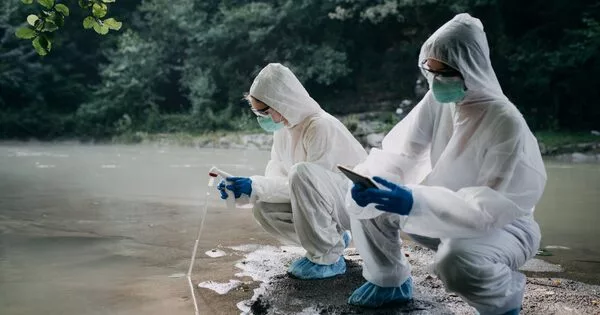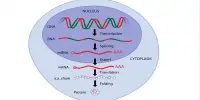In public health surveillance, monitoring wastewater for symptoms of new epidemics or infectious diseases is a valuable technique. This method, known as wastewater-based epidemiology (WBE), has grown in popularity in recent years because to its potential to provide early warning of outbreaks and track the presence of infectious pathogens in communities.
According to the researchers behind the UK’s first pilot public health surveillance system based on wastewater analysis, routine monitoring at sewage treatment works could provide a powerful early warning system for the next flu or norovirus epidemic, alerting hospitals to prepare and providing vital health information to public health agencies.
According to wastewater researchers, routine monitoring at sewage treatment plants might provide a potent early warning system for the next flu or norovirus pandemic, alerting hospitals to prepare and providing crucial health information to public health organizations.
Scientists from the University of Bath, Bangor University, and the UK Health Security Agency conducted the first large-scale and comprehensive wastewater-based epidemiology (WBE) study in the UK, analyzing wastewater from ten cities for both chemical and biological markers of health, such as pesticides, pharmaceuticals, and disease-causing viruses.
On nine days in November 2021, they gathered samples from each place at hourly intervals for 24 hours. Each day’s samples were collected and analyzed for trace chemical indicators utilizing mass spectrometry techniques. The samples were also tested for viral genetic material (SARS-CoV-2, norovirus, and adenovirus). The entire population of the sampling catchment area was approximately 7 million persons.
Our research has shown that only 10 daily samples from 10 wastewater treatment plants are required to provide anonymous and unbiased information on the health of 7 million people – this is significantly less expensive and faster than any clinical screening process.
Barbara Kasprzyk-Hordern
Detecting trace chemicals
The researchers were able to detect whether drugs had traveled through the human body or had been disposed of straight into the wastewater system by using highly sensitive chemical analysis that could distinguish between very similar signals. They could also tell if pollutants like pesticides had been swallowed or discharged into the wastewater system from agricultural land.
The study discovered that variances in chemical marker levels were primarily determined by the size of the population in the catchment region, but there were some outliers. When compared to other cities, one city had a substantially greater concentration of ibuprofen in the water, implying direct dumping from industrial waste.

Identifying disease outbreaks
The researchers discovered localized epidemics of norovirus, COVID-19, and flu, but they could also link them to increases in the use of over-the-counter pain relievers like paracetamol. The findings suggest that large-scale wastewater analysis, dubbed wastewater-based epidemiology, could detect new outbreaks of diseases in communities early on, before huge numbers of people were taken to hospitals.
The chemistry work on the project was directed by Professor Barbara Kasprzyk-Hordern of the University of Bath’s Water Innovation Research Centre and Institute for Sustainability.
She said: “Most people reach for the paracetamol when they first get sick, and try to treat their illnesses at home. So looking for large spikes in paracetamol use could give an early indication that there may be an infectious disease outbreak in the community. We can also detect markers of inflammation and so look for any possible links of poor health with exposure to harmful chemicals, such as pesticides from food or industrial sources of chemicals.”
“Our research has shown that only 10 daily samples from 10 wastewater treatment plants are required to provide anonymous and unbiased information on the health of 7 million people – this is significantly less expensive and faster than any clinical screening process. As a result, this has the potential to be a very strong instrument for providing a holistic picture of public health in many areas.”
Professor Davey Jones, who led a team of researchers from Bangor University that examined the wastewater for viruses, stated:
“Every winter, norovirus and seasonal flu have been a huge problem in hospitals; now Covid-19 has added to this problem.” Our proof-of-concept study demonstrated the potential for Wastewater Based Epidemiology to provide an early warning surveillance system for this and other diseases, allowing hospitals to plan for local epidemics.”
“This has been a fantastic collaboration of chemists, biologists, and Government agencies, working with multiple water companies to collect important data on both chemical and biological markers from different parts of the UK,” said Matthew Wade of the UK Health Security Agency. We are thrilled to be a part of this effort and look forward to expanding the utility of this public health tool in the future.”
















